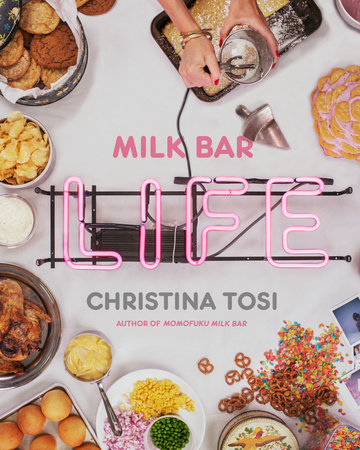I’ve reviewed and enjoyed Danielle Kartes’ previous books “Rustic Joyful Food: My Heart’s Table” and “Rustic Joyful Food: Generations” but it’s her appearance on Food52 with Kristen Miglore that I remember best. They made Coconut Custard Macaroons together, and the synergy was hilarious. So I had a very vague idea of what to expect in her newest book, “Butter, Flour, Sugar, Joy.” A couple of previous “Joyful” recipes are reprinted in the new book (including the macaroons), and there might be other reprinted recipes as she’s authored 11 books total. (As I’ve mentioned previously about this cookbook series, there’s some faith-based commentary in it. I’m not passing any judgement. You do you.)
The book is simply divided into:
- Cookies
- Puddings, Possets, and Panna Cotta
- Bars and Bakes
- Pies and Galettes
- Cakes
Some of the recipes I dearly want to try are:
- Chew spiced molasses cookies
- Perfect apricot and chocolate chunk oatmeal cookies
- Gloria’s chocolate drops with cream cheese glaze
- Hummingbird oatmeal cookies
- Swedish cream with port wine and berries
- Real pistachio pudding
- Old school tapioca cream pudding with rhubarb compote
- No-bake blackberry cheesecake slab
- Skillet s’mores brownie
- Cranberry bread pudding with cream cheese glaze
- Rhubarb and frangipane galette
- Silky smooth cream cheese pumpkin pie
- Creamy mango lime tarts
- Tender gingerbread cake
- Gramma Thora’s walnut and sour cream cake
- Buttermilk, cherry, and pistachio cake
- Buttermilk yellow sheet cake with glossy fudge frosting

The first recipe I made was for snickerdoodle bars. The ingredients are fairly typical of snickerdoodles, but I noticed that there is no baking soda in this recipe. The twist here is that the dough is cooked in a 9×13 pan. I made a half batch and used an 8×8 pan, but no other changes (even though I was really tempted to throw a pinch of baking soda into it). They smelled lovely while baking. When I pulled them out, I realized that my bars looked nothing like the book photo. I was really confused for a few days. I do think I overbaked them, compared to what Kartes intended but I couldn’t figure out why they looked so different. While mildly disheartened, I kept reminding myself that they were pretty tasty cookies. I even brought a few to a friend’s house and they were quickly consumed.
At some point, it occurred to me to image search for snickerdoodle bars, and to my surprise (and delight?), my results look like what most people published.
Out of curiosity (and maybe masochism), the second recipe I made was for the “ultimate rye chocolate chip cookie.” I wanted to make this cookie because there are no leavening agents listed… no baking soda, no baking powder. But the cookies look gorgeous in the book. Was it possible? (Also, the trend for the rye and chocolate combo has been pretty strong for the last 5 years or so, but I had not tried baking it yet.) These cookies call for: browned butter, dark brown sugar, salt, eggs, vanilla extract, all-purpose flour, rye flour, and chocolate of your choice (disks, chips, or chunks). Again, I made a half batch (to save my waistband). And the results? They were not what I expected. Luckily, they weren’t too dense, but they simply did not have the texture the photo conveys. I know that I chose to use chips instead of disks or chopped chocolate, but the cookies never spread. They were very “tight” looking. And my cookies didn’t have nearly enough chocolate. There are no instructions for banging the cookies a la Sarah Kieffer style. There are no instructions for pressing them flat (which I tried for the second tray that went into the oven… but it didn’t help much).
I’ve done some research on this (yes, it mattered that much to me lol!) and I think the issue comes down to two things. One, baking soda helps develop color and helps the cookie dough to spread when it bakes. I wonder if Kartes leaves it out because there’s not enough water in the recipe to activate it. A lot of recipes that use browned butter will ask you to add a small amount of liquid to replace the water that was cooked off in the browning process. Two (and more importantly here), I think Kartes is scooping her cookies larger than the printed “heaping tablespoon.” Dough of a relatively small size bakes fairly evenly. So, the way it looks when it goes into the oven will be similar to the way it looks when it comes out. If the cookies were baked larger, then the cookies would spread out more as the edges melt more quickly than the center can.
This deeper dive into cookie science honestly reminded me that sometimes you have to go with your gut instinct. Re-watching Danielle Kristen and Kristen Danielle bake together reminded me that it’s how Kartes operates. Are the recipes in the newest book simple and sweet? Yes, but maybe don’t equate that with “good for beginners.” If you think your cookies need to be larger, or needs more mix-in’s than listed, then go for it. A new baker may prefer more guidance. And more importantly, don’t beat yourself up if your results aren’t as pretty as you wanted. They will still taste good and provide joy.
Disclaimer – I kindly received this book from Sourcebooks for this review. I’m not getting paid for this post. The views and opinions expressed are purely my own. The book is available for purchase from your preferred vendor, and will be released on November 6th.
Reference Links:
https://read.sourcebooks.com/author/A4034/danielle-kartes






